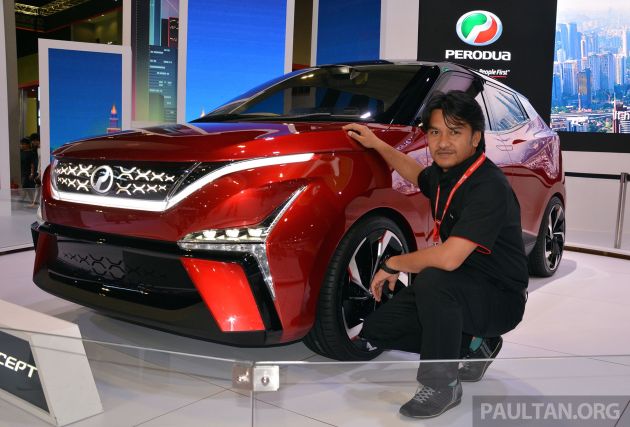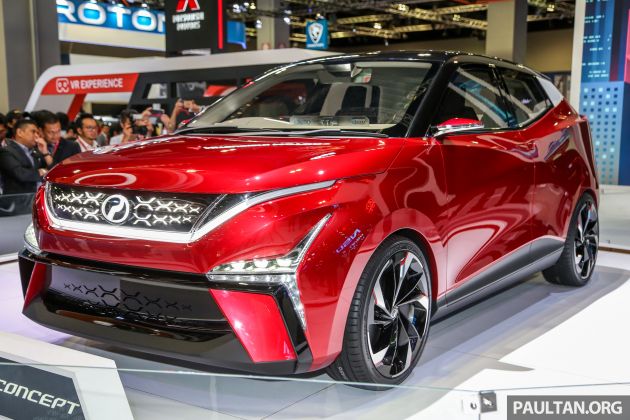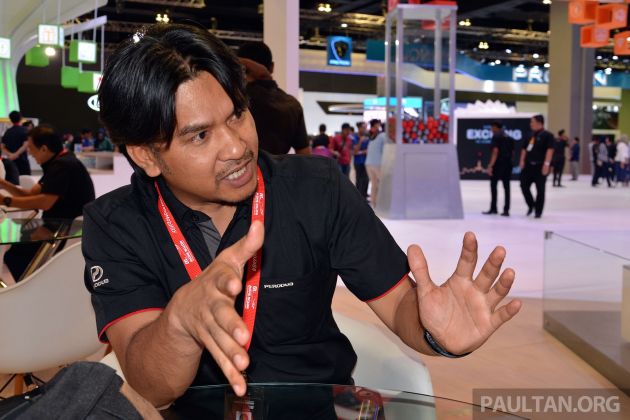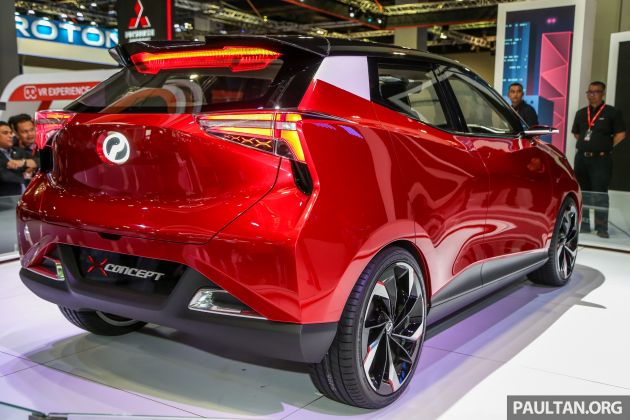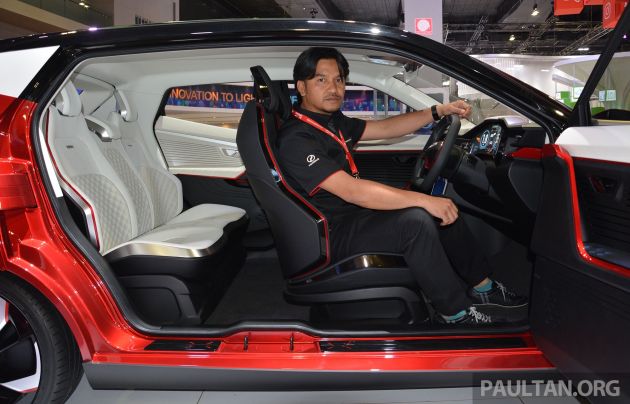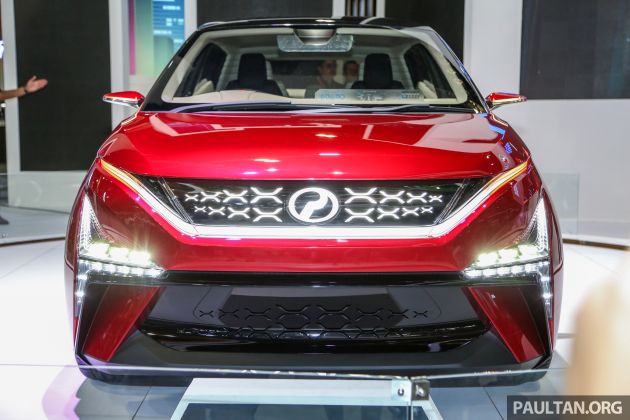What was your star of the just-concluded KL International Motor Show (KLIMS) 2018? Mine was the Perodua X-Concept, by a big margin.
Big props to Hyundai for bringing a wide variety of displays, from its green technology flagship – the Nexo fuel cell EV – to the i30 N hot hatch that has been giving me inappropriate dreams. Meanwhile, the Toyota FT-1 Concept in graphite grey was as gorgeous as the first time I stared at it, four years ago in Jakarta. Even the human curves from Lexus stood no chance against the sensuous Supra proposal.
All well and good, but Perodua’s headlining display was the most significant of them all, because the X-Concept is “The Perodua of Tomorrow” – their words, not ours. Now, Malaysia’s market leader isn’t one to do things just for fun, and has a habit of keeping its cards glued to its chest, so when it wheels out something like the X-Concept, we sit up and take notice.
Typically, it came as a surprise. Not just because we didn’t know of a Perodua concept car until the KLIMS press day, but because it looks good. IMHO, previous P2 concept car efforts have been a bit cartoonish and/or too fanciful, but this one oozes maturity and reflects the company’s newfound confidence in its design capabilities. Cover up the badges and the X-Concept could have been from any top carmaker.
But it’s still very much a practical Perodua, designed by Malaysians with (very demanding) Malaysian carbuyers in mind, as we found out talking to Perodua chief designer and the man behind the X-Concept, Muhamad Zamuren Bin Musa.
Firstly, if you were wondering what exactly is the X-Concept, you’re not alone. It’s a five-door hatchback, but is it Myvi-sized or smaller? There’s an ‘X’ in the name, so is this a crossover? “Mazda CX-3” came to mind when we had our sneak peek (literally, as only a part of the car’s profile was revealed to transport minister Anthony Loke during his tour; the car was fully revealed later during the press day) of the showcar. Perodua’s show brochure didn’t elaborate either.
Zamuren, 43, answers our first question by stating that the X-Concept is not an SUV, but a regular compact hatchback with a tinge of crossover in the design. We wouldn’t have guessed, but the showcar’s footprint is between the Axia and the Myvi – in the metal, the X-Concept looks much bigger than it actually is.
The X-Concept’s footprint is 3,750 mm long by 1,665 mm wide, which puts both dimensions in between that of the Axia (3,640 mm long, 1,620 mm wide) and the Myvi (3,895 mm long, 1,735 mm wide). Ditto the 2,460 mm wheelbase, which is sandwiched by the Axia’s 2,455 mm and Myvi’s 2,500 mm. According to Zamuren, this package size – larger than today’s Axia, but still comfortably shaded by the Myvi – is for a global compact car, which you can read as A-segment.
If the size increase hints at a future Perodua A-segment hatchback moving away from its traditional Japanese kei-car roots, the styling double confirms the shift. “Their design is not 100% suitable for Malaysian tastes,” Zamuren said, in reference to Daihatsu designs for Japan and Indonesia markets, and how conditions in a country influences design.
“The environment in Japan is totally different from ours, the roads and houses are small, which suits kei cars. In Indonesia, it’s very congested and there isn’t much space on the road – the infrastructure there is also different (from ours), and cars have high ground clearance as a result,” he explained, before pulling out a food analogy to further agitate my rumbling tummy.
Likening our preference to nasi kandar versus sushi, Zamuren says that Malaysians like cars that are “complicated but simple” – something that’s heavy in design (kasi kuah campur, boss!) but “simple” in practicality and cost. JDM cars are more akin to sushi, which looks simple enough (it’s just raw fish on a lump of rice), but requires more skill and precision than a casual observer might appreciate.
Zamuren, who has been with Perodua for 21 years, agrees that Malaysian carbuyers are rather hard to please and they seem to want it all. “For Malaysians, everything must be sporty,” he quipped, adding that the X-Concept is as sporty as it can be without compromising practicality and space. “Practicality is the first priority,” he rightly stated.
Having to consider the latter, which includes good luggage room, was a challenge for the team of six designers who worked on the X-Concept for six months. Everyone loves an emotional design, but have you noticed that Mazdas are a long way from the best in class when it comes to space and visibility? Balancing looks and practical aspects is tough, more so when one is working on a small footprint.
Zamuren is happy when I remark that the X-Concept looks larger than its dimensions suggest. He says that the main styling theme is “bold and muscular”, and the muscular effect was achieved by the slight “tucking in” of the profile, giving the sides more volume and sculpture.
They had to sacrifice 15 mm of rear cabin width for this, but as this is a compact car designed for young couples with small children at the back, the designer in him thinks it’s a good trade-off. I think that the two-tone cabin, which is dark and sporty in the cockpit while being light and airy at the back, makes sense too.
The flow of the lines also appear slightly pinched in the middle, amplifying the above-mentioned muscular effect. It’s topped off by the now de rigueur floating roof, unmissable here thanks to a white buffer zone on the C pillars. The windowline kink, while not as severe as on the Toyota C-HR, is another concession to style.
Note that while Perodua wanted the showcar to have “SUV juice”, the lack of black lower body cladding and overfenders typical of crossovers is intentional, as is the regular car ground clearance. Let’s just say that they didn’t have a Volkswagen CrossPolo in mind.
Moving to the front, one thing I found neat was the repetition of the stylised ‘X’ used in the logo. You can see the motif – which looks like an unjoined Under Armour mark – as part of the light-show cum wraparound grille, stamped on the lower intake, and in the rear light clusters.
Zooming out, the face itself has a prominent “X theme” going on, which Zamuren says is part of Perodua’s new design language that will feature in upcoming models. The above-mentioned “pinch” in the side profile also creates a gentle X.
The X-Concept’s lighting arrangement is unconventional, with LED main beams placed lower than usual. This style, which typically puts a slim LED DRL strip on the top tier, was seen on the Citroen C4 Cactus, and is currently being used by Hyundai on its SUVs. Zamuren says that LED technology takes up less space than an old-school headlamp module, which opens up styling possibilities not available previously.
The man and his team set out to inject character into a compact car design, and to blend sportiness and “muscle” with non-negotiable parameters such as footprint and cabin space. Given the constraints, I think the X-Concept is a fantastic effort. So, are we looking at an early proposal for the next-generation Axia, which by the way, has just turned four?
P2’s design boss, who has been free-flowing in speech thus far, glances at the PR minder between us, and says: “The X-Concept is just a study model for Perodua, to get customer feedback. We want to listen to the customer – can they accept this, is it too much, is it overdone? It’s experimental.”
As for the SUV flavour seen here and if we should expect crossover vibes in Perodua’s future hatchback models, Zamuren says that looking at the global auto trend, the SUV style would be dominant in the next five to 10 years. Although this is not yet the case in Malaysia (the segment is growing, though), the X-Concept is an “opportunity for us to check whether this is a good look for the Malaysian market. The hatchback is our core, our bread and butter, for now and the future.”
Just a flight of fancy? I think there’s more to the X-Concept than just an after-hours fun project by the design team. In his KLIMS 2018 speech, Perodua Sales MD Datuk Dr Zahari Husin said that the auto industry is seeing a demand that its products and services reflect the customer’s lifestyle.
“This change has fundamentally altered our approach to making cars; the car is no longer just a means of transport, but a symbol of who you are and a representation of your lifestyle,” he said.
Lifestyle. Purely functional and utilitarian cars won’t do it anymore moving forward, and if the X-Concept is anything to go by, “The Perodua of Tomorrow” would have design and some desirability as icing on the usual Perodua cake of sensible qualities.
Source: Read Full Article

